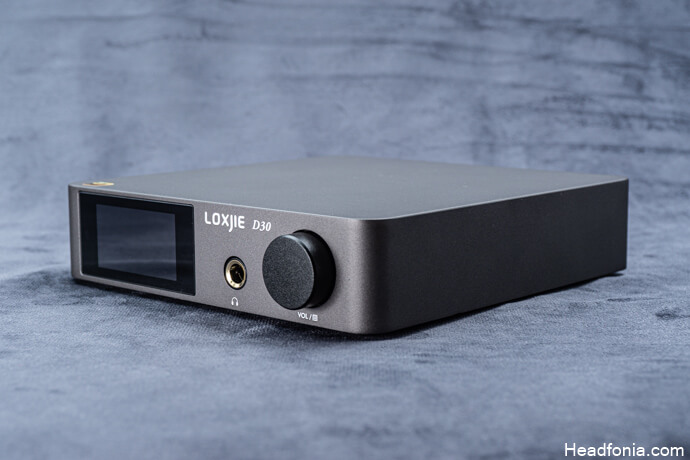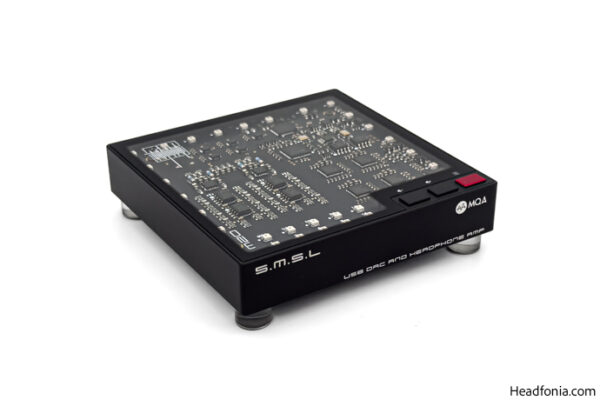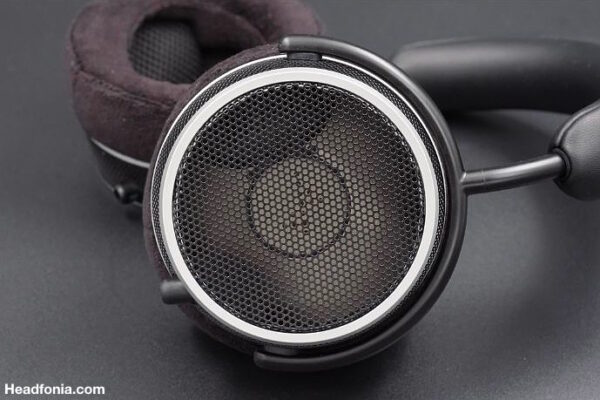DAC Performance
First of all, I personally found the DAC performance rather stellar. I think the headphone amp stage is slightly bottlenecking the unit. Straight out of the RCA output while the DAC Mode is toggled on, I hear a neutral, detailed, clean signature with plenty of air and details. The texture and the resolution are certainly impressive for the price and I think Loxjie nailed this section of the D30. I am fairly familiar with the ES9068AS’ dynamics and technical side, and it is safe to say that Loxjie’s implementation of the ES9068AS is quite good. The DAC behaves similarly to what I heard before.
The tonality is neutral, it has a good body, a good amount of air, good amount of detail. The timbre feels clean and slightly technical compared to AKM devices. The 9068AS has a sharp and precise PRaT and handles congestion-prone passages with multi instruments very well. The timbre does not feel artificial but it does not have the slightly warm-ish, sweet tonality of, for example, the AKM 4493/5. Note that this is not specific to this device. After the AKM factory fire, almost all manufacturers had to switch to ESS DACs, and there are slight signature differences between the two companies.
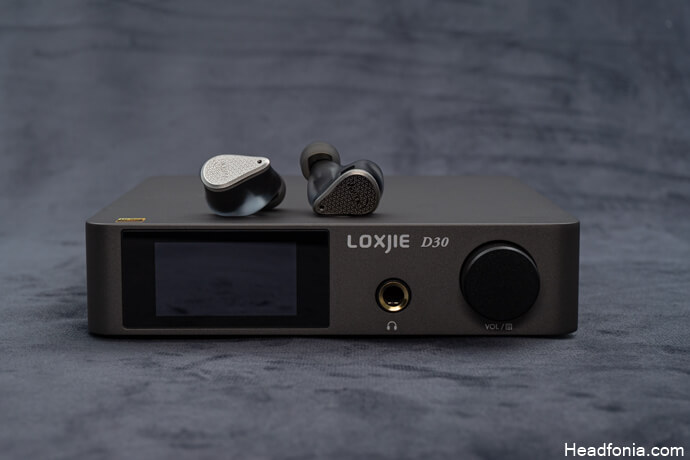
DAC-AMP Performance & Power
In this chapter, I will try to explain why I found the DAC stage superior to the AMP stage of this unit. First of all, with this form and size, I expected much more power. The D30 can dish out 110mW into a 32-ohm load. If you’re planning to drive inefficient planars or dynamics with it, don’t. I suppose Loxjie was forced to design the amp stage like this to keep the unit under the $300 mark but the stellar DAC inside the product deserves more than that. Of course, this is only important for people with headphones that are not so easy to drive. Those who plan to use this product with IEMs or active speakers, or even, easier to drive headphones, need not worry about this issue. If you already have an amp in your inventory and are looking for a DAC, this product offers excellent performance for the price. Let me describe how it sounds out of the HP out with cans like the HD58X or the DEVA.
The following part will be a comparison between the D30 DAC+AMP and D30 DAC out + SMSL’s SH-8 Amplifier. The D30-SMSL pair sounds slightly more detailed, has sharper dynamics and a bolder note weight. The pair sounds more authoritative and defined. The low end moves more air and the impact is greater. The midrange feels slightly more articulate and the bolder timbre feels more natural. The treble has better definition to it as well, with more extension and air on the top octave. The difference is not day and night but it is there, especially with cans. For the IEM users out there, the difference is even smaller for you. Of course, SMSL’s excellent amp, SH-8s boosts the stellar DAC inside the Loxjie D30 but it may not be very reasonable to pay an extra $200 for the amp if you’re only planning to use the D30 with IEMs or active monitors. On another note, the D30 has an excellent 1.1-ohm output impedance and is totally suitable for sensitive IEMs out there.
Using the D30 DAC-AMP with the Xenns Up tribrid IEM results in a euphoric experience. The bass hits hard, the texture is great and the attack and decay feel fast. The hard-hitting bass never touches or bleeds into the midrange proves that the pairing has equal, excellent technical performance. The midrange is articulate and clean with good note weight thanks to the Xenns’ nature. The treble is just brilliant, EST’s shine when paired with a capable DAC and that is what happened here. Treble reaches to the top octave without any shrill or unwanted sharpness. The imaging is quite good as well, the DAC-AMP does a great job of polishing what is already great about the Xenns and covers its vulnerabilities. Overall, I really like this DAC-AMP and I think many of you will be happy with it as long as you don’t try feeding something like the HE-6 with it.
Comparison
vs. Khadas Tone 2
First of all, the Khadas Tone 2 is around 3 times smaller than the D30, yet delivers 2 times more power in comparison. However, as a pure DAC, the D30 sounds more dynamic and more defined compared to the Khadas. It offers more detail and better imaging while the Khadas feels somewhat linear compared to the D30. The D30’s texture is slightly sweeter compared to the Tone2. The most obvious difference between the two is the low-end reproduction to my ears. The Tone2 has this super tight and fast bass whereas the hits of the D30 are more impactful and less agile. The D30 hits harder, rounder, and the D30 shows more authority in the sub-area.
Build-quality wise both of the devices have excellent builds and I really can’t pick one over the other. On another note, controlling the Khadas, switching filters, etc. is very hard. I don’t like its controls and I find it time-consuming whereas the D30 offers much easier controls thanks to its screen and remote. Do note that one device is a lot smaller and offers mobile use while the other one is a full-size desktop DAC-AMP. I included this comparison because they both are excellent sounding devices that are around the 200-250 USD mark.
vs. Topping EX5
Topping EX5 is a DAC & AMP and a possible upgrade to the D30. The EX5 is a powerhouse, offering 1300mw into a 32-ohm load. That is tenfold what the D30 is offering. Apart from that, the EX5 supports LDAC through Bluetooth 5. It also comes with dual ES9038Q2M DACs compared to the single ES9068AS of the D30. Apart from those, there are signature and technical differences between the two devices. The EX5 offers more detail retrieval and a better PRaT while the D30 feels a tad smoother in general. The EX5 has a more refined midrange, the instruments, especially string instruments feel bolder and more natural. Another big difference between the two devices is stereo imaging. The EX5 offers a bigger, deeper stage and a more precise positioning of the instruments. It managed to impress us so much that we had to give an HFN recommendation to it. If you don’t need the extra power, LDAC, or simply the amp, you can go with the excellent DAC performance of the D30.
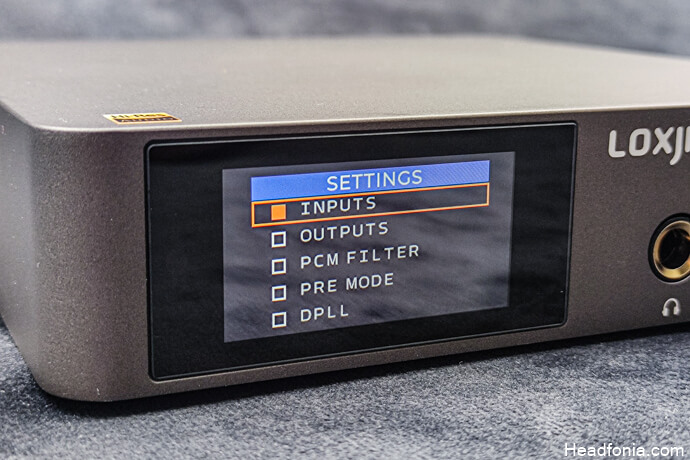
Last Words
We have reviewed many SMSL products before, but we haven’t reviewed anything from its sister brand, Loxjie, before the D30. Frankly, my first impression of the brand is quite positive. If you’re looking for a product that doesn’t take up a lot of space, is easy to use, has good build quality, and sounds good, the D30 could be the right device for you. It has a stellar DAC inside and it offers plenty of features for its price. I recommend you to try the D30 if you are in the market for a DAC & AMP around the $250 mark.
If you need a DAC with a similar feature set, I suggest you give the D10B a shot before spending any big bucks. It may surprise you in a good way.
Page 1: Loxjie, Loxjie D30, Packaging & Accessories, Design & Build Quality, Technology & Features, Controls & UI
Page 2: Usage, Performance & Sound, Comparisons, Last Words







